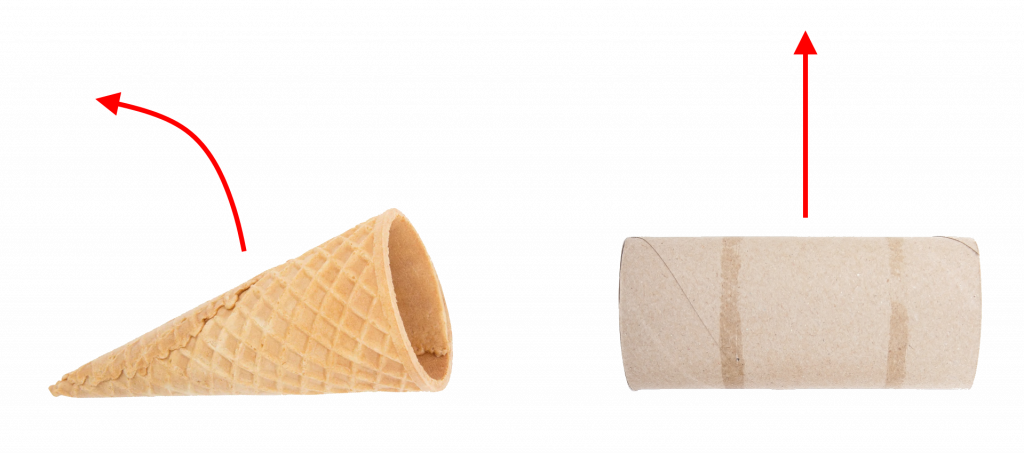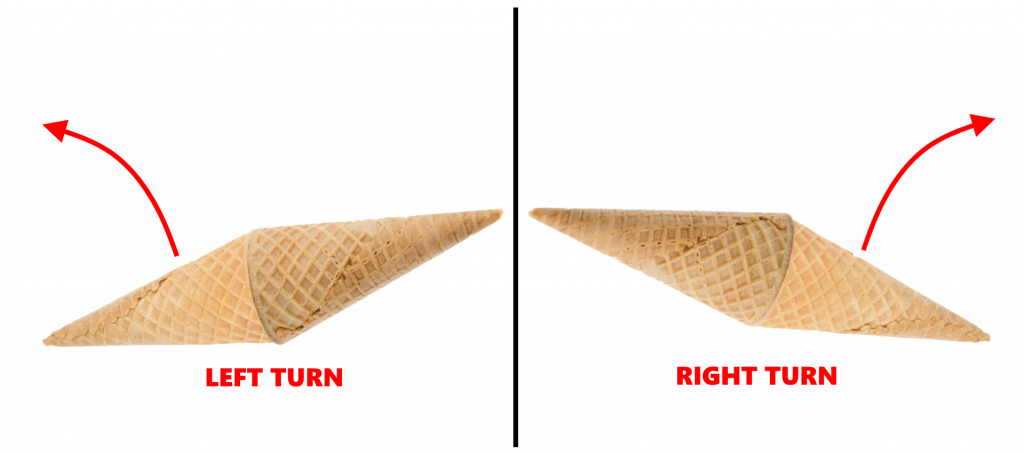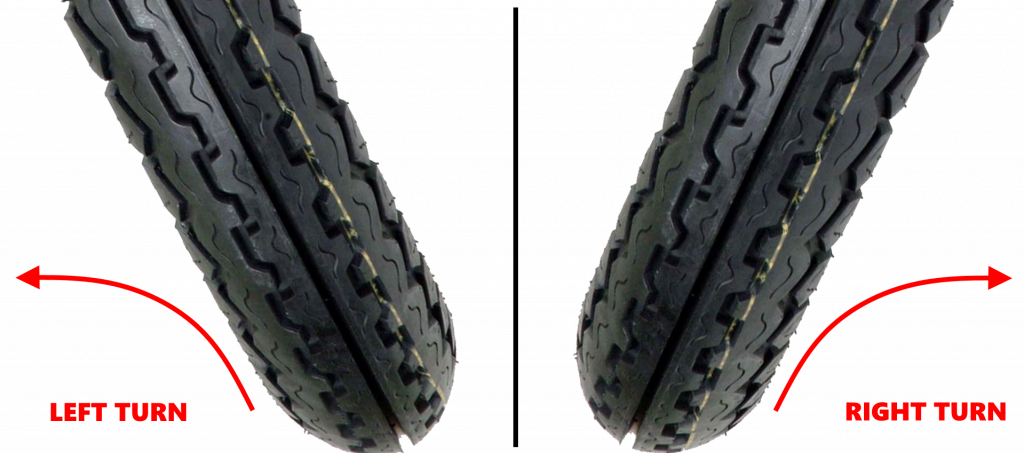COUNTER STEERING
There is nothing new here in terms of dynamics. The moment your parents removed the training wheels from your first bicycle with the tiny 8″ wheels, you have been counter-steering. At 5 years old we had no time for physics, but I think we can all remember when your parents finally let go of the seat. This gave us the understanding and the muscle memory of steering the bicycle underneath our body weight, to keep our balance on 2 wheels. Later that day, we likely figured out that in place of steering the bicycle underneath our body to keep the bicycle going straight, we instead steered slightly and very temporally in the other direction to allow our body to lean to one side of the bike, which resulted in our first turn. Counter-steering (steering counter, or opposite to the direction of the intended direction of the turn) is what you used to temporarily get your body weight to the inside of the bike, to create the turn. At that moment, you became a “counter-steer-er.” Congratulations!
So why the big fuss? I learned that when I was 5.
Well, this skill is one of the most important skills to master when entering the sport of motorcycling. It is also one of our “4 Essential Skills” here at AMS. We have the foundation from our early experience with bicycles and can likely handle a motorcycle at slower speed with no problem at all. The problem exists at higher speeds. Motorcycles travel much faster and have tires and wheels that likely weight 8 to 10 times more than bicycle wheels. This creates a significant amount of centrifugal force at higher speeds. Add in a 500+lbs motorcycle which weighs much more than the rider, and problems begin to emerge. The faster a motorcycle travels, the stronger these forces are in keeping the motorcycle upright and traveling in a straight line. Many new riders have fallen victim to this unexpected force and have ridden straight off the road as a result. Our goal is to better prepare you for this by slowly increasing our speeds, and feeling out how much counter-steering input is required, to build that important muscle memory to perform this in emergency situations. The following video was sourced from YouTube’s Fortnine.ca. This clearly gives us an example of a new rider in a group of experienced riders, who failed to develop the muscle memory to counter-steer a motorcycle at unfamiliar higher speeds. In no way are we poking fun of this rider. This rider’s only mistake was that he failed to practice counter-steering at this speed, before this ride.
To extend our counter-steering discussion further, lets talk about motorcycle wheels and tires for a moment. If I rolled an empty toilet paper roll across the floor, it would roll straight. If I rolled an ice-cream cone, it would turn in a circle. (Left Picture Below) This is due to the shape of the cone and the fact that one end is smaller than the other. If we connect 2 ice cream cones together at the big ends, our newly formed “cone tire” would steer in one direction when it is leaned on one of the cones, and the other direction when leaned on the other. (Center Picture Below) So now we can see why motorcycle tires are shaped the way they are, to carve turns. (Right Picture Below) There are few more motorcycle geometry concepts involved such as “rake” and “trail” that have a lot to do with steering and the leverage required to counter-steer a motorcycle, but we are learning, so lets just focus on the basics.



It is enough to say that a motorcycle turns at higher speeds by leaning onto the sides of it’s tires. (or one ice-cream cone or the other)
Some counter-steering explanations given to new riders fail to mention that this counter-steering input is “very momentary“. Keep in mind, counter-steering is only required to place your motorcycle into the desired level of lean. This could translate to only 1/2 a second of counter-steering input, depending on the situation and speed. Once the bike is leaned at the appropriate level of the curve, and travelling at a consistent speed, the bike will naturally turn without any counter-steer input. If this curve happens to get tighter (decreasing radius curve) within the curve, the bike will require additional counter-steer input. This is the “muscle memory” or instinct that all new motorcyclists must master.
To sum it up, Counter-steering (AKA Push Steering) sees us momentarily pushing on the handle grip in the direction we intend to turn, thus momentarily steering the motorcycle in the opposite direction. This causes the lean, which rolls the tire onto it’s side, which carves the turn. We tend to stick to the term “Counter-Steering” rather than “Push Steering” because the same dynamics of the steering input could also be accomplished by momentarily “pulling in” the handle grip on the opposite side in which we intend to turn. We like to think that both hands should always be involved in controlling our motorcycle.
Let’s get out there and work on this stuff!